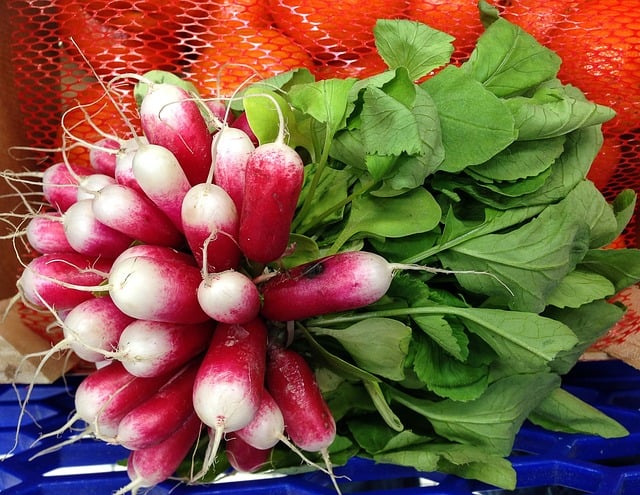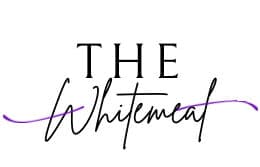If you’ve been on the internet for quite sometime now and are particularly hooked by Asian recipes, then you’ve likely come across the yellow pickled radish.
I know, you cant seem to find a variety of radish that has a yellow flesh, yet somehow, the asian can? Or is there a secret to the yellow color of the pickled radish?
This article unveils the big secret of the yellow pickled radish.

The big secret
Not for once did you think that the yellow coloration of the pickled radish came from the chemistry of pickling right?
If your answer is in the affirmative, then pat yourself on the head and say, better!
Yellow pickled radish have their color from the addition of a coloring compound.
The coloring compound could be from a natural source like the regular turmeric spice or from a chemical source such as tartrazine which is a food dye that imposes a lemon yellow color on foods that have a white flesh.
The food dye is specifically used to add coloring to many food items such as frosting, spices, dessert like ice cream and even beverages like mountain dew.
What is tartrazine? And how is it made?
Tartrazine is a chemical compound which is derived from the azo coupling reaction between pyrazolone T. and sulfonic acid diamine.
Its this azo linkage formed that supplies the yellow color of the compound.
Is tartrazine food dye safe?
When it comes to safety, yellow food dye is still in the grey area. So many research point fingers at the chemical for a lot of side effects, but none have come to a conclusion that #yellow food dye is the actual cause of these side effects.
Take for instance, the neurotoxicity status of yellow food dye.
When rats were dosed with the food dye through food and then studied for side effects in the lab, the research showed that the food dye was somewhat toxic to the brain cells of the rats.
It caused a reduction in the neurotransmitters of the brain, as well as the destruction of some brain cells.
But that is just confined to rats, and it is not known whether or not the case is the same with humans.
Another concern for using yellow food dye is it’s potential to cause hyperactivity disorder in children when taken at higher doses. The same study pointed the trajectory growth of the use of food dyes with increase in hypersensitivity issues in children over the past 50 years, but this alone is not sufficient to single out yellow food dye as the culprint, since so many changes have occured over the last 50 years a lot of them could a thing to do with the increase in hypersensitivity in children.
Another study also pointed out the DNA damaging abilities of food dyes like yellow 5, which could indicate that they are likely causants for cancer.
All these researches and the fact that none of them have conclusively isolated yellow food dye as a potential harm is reason why it still remains in the grey area, and it is approved for use in certain countries.
Is yellow pickled radish healthy?
Putting aside the ambiguity brought in by tartrazine, it’s easy to see how yellow pickled yellow is very healthy.
Radishes contains a lot of vitamins and minerals which help with the buddy system in the various ways that they do.
It also contains antioxidants they can help reduce the damages required to sauce, therefore, preventing diseases, such as heart, disease, kidney disease, etc.
The high percentage of vitamin C content in radishes also means that it helps boost the immune system which fight against diseases.
What are the natural colors that radishes come in?
Rose red
Most radishes would have a white flesh on them, but a particular radish called the watermelon radish has a light rose color on the interior with a green outer skin .
The watermelon radish is actually a variety of the daikon or white radish which appears long and tapered or sometimes oblong with a white skin and flesh.
White
White is the color that most radish flesh come in including the black radish that has a black skin.
Purple
There are also radishes that come with a flesh in various hues of violet. A typical example is the plum purple variety of radish that has a purple flesh.
What natural food coloring can you use?
Turmeric
Turmeric produces a certain compound called curcumin which is bright yellow in color and gives the turmeric it’s signature color.
For this reason, turmeric is normally used as a substitute for food dye to color the white skin of daikon radish. For this purpose, ground turmeric is mostly used.
Gardenia fruit powder
The gardenia plant is native to South East Asia and as such not many can actually have to its fruit.
The fruits of gardenia produce a certain compound called crocin that is responsible for a yellow color.
For this reason, the powder from the grounded fruits is typically added to food items like pickles in order to imposes the yellow coloration of them.
Curry
If you have ever used curry in a dish, you would know of the interesting yellow color that it adds to cooked food. Curry can also be used as an ingredient to pickle radish so it add a yellow coloration to the flesh.
